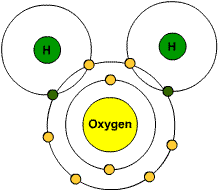Alcohols
For OCR and Edexcel exam boards
Alcohols have the general formula of C
nH
2n+1OH. The nomenclature works by replacing the “e” from the alkane with an “-ol” alcohol ending. The position of the OH group is shown in the name by a number as shown below.
CH
3CH
2CH(OH)CH
3 is butna-2-ol.
Volatility of Alcohols
Definition
“the ease which the liquid turns into a vapour”
The hydrogen bonding between the molecules greatly reduces the volatility of the alcohols. The hydrogen bonds between the molecules are much stronger than the van der wall forces in alkanes. As a result the alcohols have higher boiling points than alkanes as shown in the table below:
Ethanol 352 Hydrogen bonding Propane 231 Van der Waals’
Propan-1-ol 371 Hydrogen bonding Butane 273 Van der Waals’
Butan-1-ol 390 Hydrogen bonding Pentane 309 Van der Waals’
The OH alcohol group has been taken into account in the table. The alcohol molecules have been paired with an alkane with an extra carbon so the size of the molecules are comparable. The higher the boiling points the lower the volatility. All the alcohols have considerably higher boiling points than the alkanes.
Miscibility of water
Definition
“The measure of how easily a liquid mixes”
It is equivalent to the solubility of solids.
In terms of alcohols it is their ability to form hydrogen bonds with water. The miscibility of alcohols in water decreases as the hydrocarbon chain increases. This is because the long molecules disrupt the hydrogen bonding with other water molecules. The hydrocarbon chain is non-polar and only exerts weak van der waals’ forces.
Methanol and ethanol are freely miscible in water in all proportions.
Industrial Production of Alcohols
Methylated spirit is a common industrial solvent. Methylated spirit comprises of ethanol adulterated with methanol. The methanol is used as a deterrent so that people don’t drink it. It is sometimes coloured with a strong colour and infused with a foul smell. The contamination of ethanol in this way is to avoid the high taxes imposed on alcoholic drinks.
Ethanol is made industrially by the addition of steam with ethene in the presence of a phosphoric acid catalyst.
C
2H
4(g) + H
2O(g) →C
2H
5OH
Ethanol production by fermentation
Fermentation uses naturally occurring yeasts on the skins of fruits. Glucose is broken up into ethanol and water by the yeast.
C
6H
12O
6(aq) → 2C
2H
5OH + 2H
2O
The reaction is an anaerobic exothermic reaction. Over the years some improvements have been added. Fermentation can occur at lower temperature in the presence of nitrogen. This preserves the flavour of the fruit. Fermentation stops when the alcohol level reaches 15% to get round this problem a process of distillation is used to remove the alcohol for continuous production









